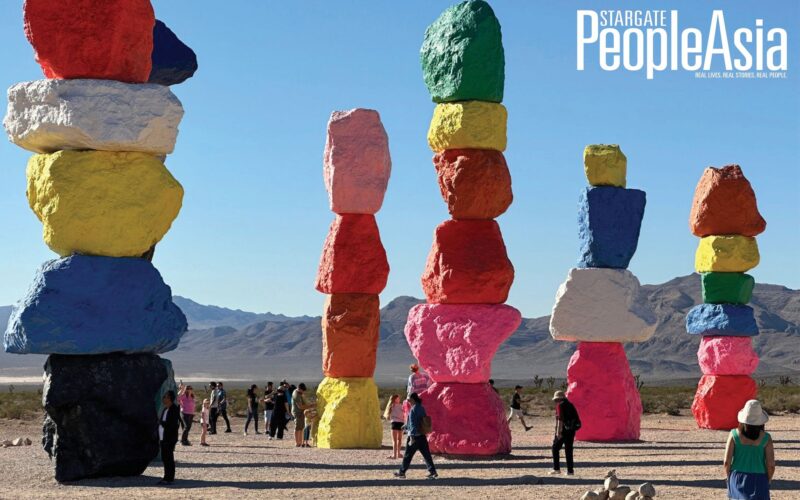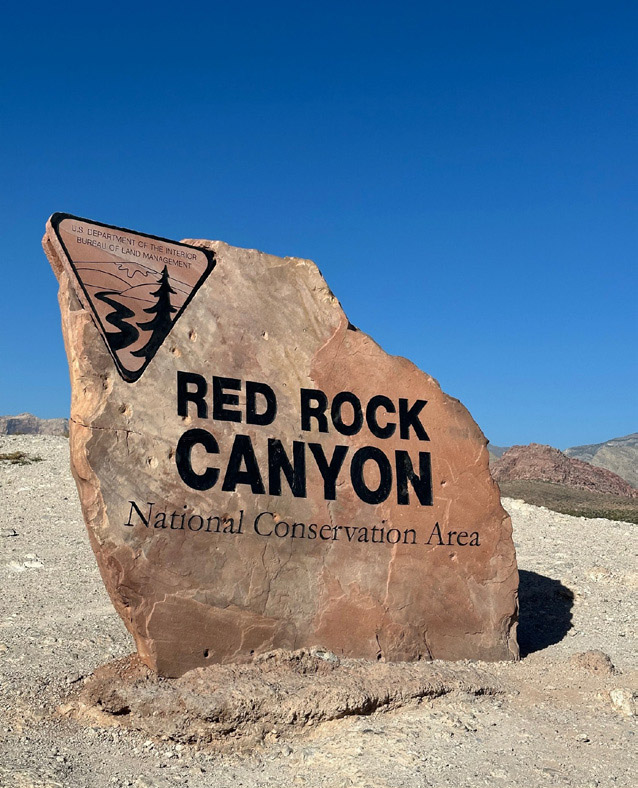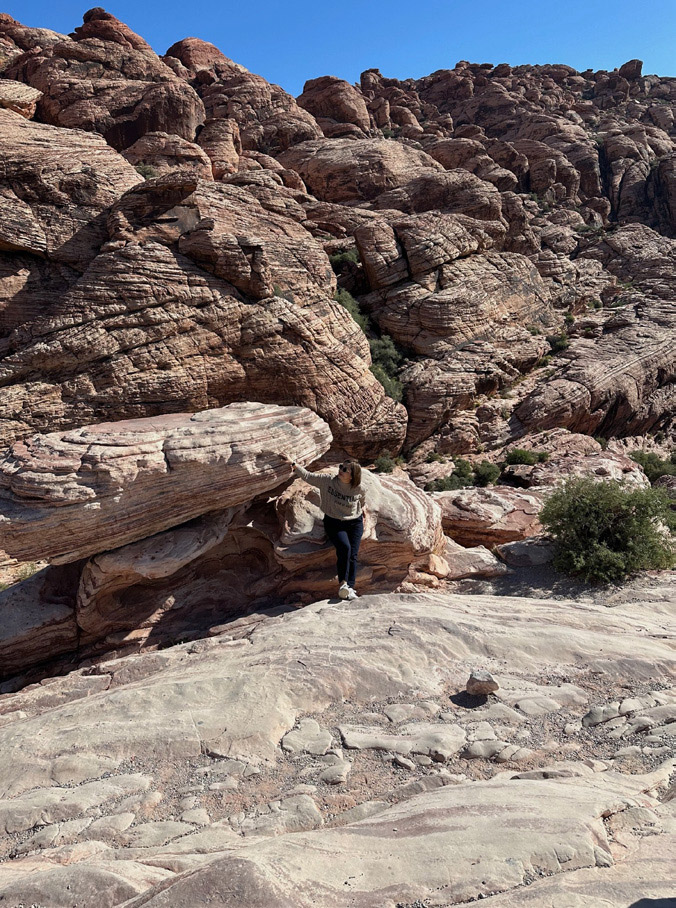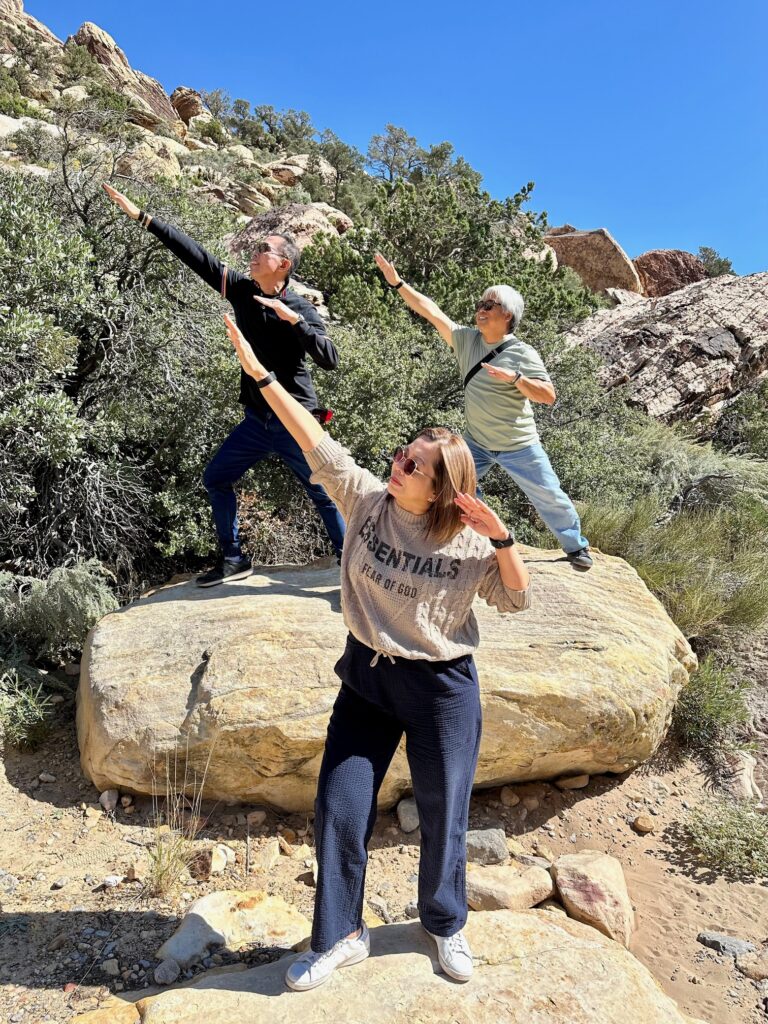Text and photos by ALEX Y. VERGARA
All that Las Vegas razzle-dazzle has its limits, especially among repeat visitors to America’s most celebrated gaming city. What to do? Whenever you find yourself again in Vegas, start venturing further afield by exploring Nevada’s great outdoors. Two nearby options worth the 20-minute drive are Red Rock Canyon and Seven Magic Mountains.
Beyond Las Vegas’ dazzling neon lights, out-of-this-world shows and the chance to become an instant millionaire with the mere push of a button or roll of the dice in one of those themed hotels along its legendary “Strip” are two attractions best appreciated under the garish light of day.
Situated in different locations in the Mojave Desert and within driving distance from the city center, Red Rock Canyon and Seven Magic Mountains couldn’t have been more different from each other.
While the former, a sprawling series of rocky hills, yawning gaps and fossilized sand dunes in gradating shades of red, gold and bone has God’s fingerprints all over it, the latter, without a doubt, a more ephemeral man-made attraction consisting of seven towering totem poles of stacked and painted locally sourced boulders, is the handiwork of Swiss artist Ugo Rondinone.
Owing to Las Vegas’ dry desert climate, which gets a tad pleasant during fall and early winter months, both attractions are readily accessible almost throughout the entire year.
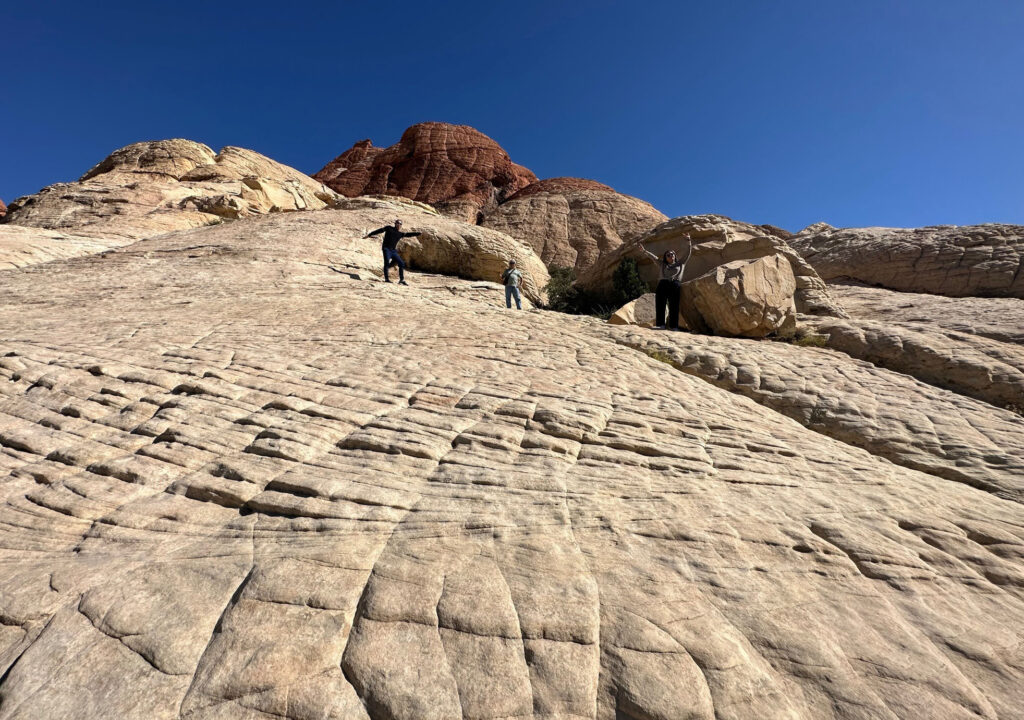
True to its name, Red Rock Canyon, the product of an endless series of floods, erosions, wind events and movements in the earth’s surface that transpired over millions of years, instantly conjures surreal images one instantly associates with Mars.
Thus, over the years, the place has become a favorite among Hollywood and Madison Avenue directors and scene scouts in search of ideal locations to shoot their latest films and TV commercials.
The road trip through Red Rock Canyon, 20 miles west of Las Vegas, allowed us to get off and take pictures at certain stops, including, of course, its visitor center for some souvenir shopping and quick immersions in bite-size information about the attraction.
Red Rock Canyon, which has been declared by the federal government as a national conservation area, charges an entrance fee depending on the size of your vehicle. Visitors in bicycles and motorcycles, for instance, are charged $8 and $10, respectively, while those taking their cars, SUVs and medium-sized trucks are charged $20 per vehicle.
When temperatures begin to dip, the attraction also draws its fair share of pedestrian visitors ($5 per person) who either hike or jog to Red Rock Canyon from nearby communities.
The drive within Red Rock Canyon’s scenic loop itself spans 13 miles, but the entire area offers plenty of day-long hiking trails for the fit and adventurous. They have a choice of terrain to hike on — from flat and rocky, to steep and sloping. The best time to hike and engage in purely outdoor activities is during cooler months, starting late September.
Since man, despite his often-outsized view of himself, is just one part of this living desert’s ecosystem, visitors are warned ever so gently to watch out and steer clear of rattlesnakes. It’s also in their best interest for overnight campers to huddle in groups and keep from wandering off alone, especially during sundown, lest they come across and get mauled by a mountain lion.
During an earlier visit to the Red Rock Canyon in the middle of a scorching summer almost a decade ago, I vividly recall one of the best parts of the trip was reserved for our ascent to the Rocky Gap Road.
It’s probably a misnomer to call it a road, as the Rocky Gap is more of a rough, zigzagging mountain trail with enough room for just one car. While we were on our way to the summit, for instance, we encountered several cars slowly descending our way. Obviously, I survived that episode and managed to come back in 2023 to relive the experience.
This time though, my friends, consisting of schoolmates from high school, and I ditched the hiking and derring-do and opted to go on a more leisurely drive, stopping and getting off every so often at certain points not to test our limits but to merely take in the sights while posing for pictures.
But as I recall during my first trip on a sturdy 4×4, whoever had enough wiggle room to maneuver was expected to give way to the other vehicle. At certain points, our driver had to stop and park our SUV as close to the side of the hill as possible to allow oncoming cars to drive by.
Located some 20 miles south of Las Vegas, the Seven Magic Mountains offers its own brand of allure and photo opportunities that, thanks to those neon-painted glow-in-the-dark boulders, somehow mirrors America’s biggest and most celebrated gaming city.
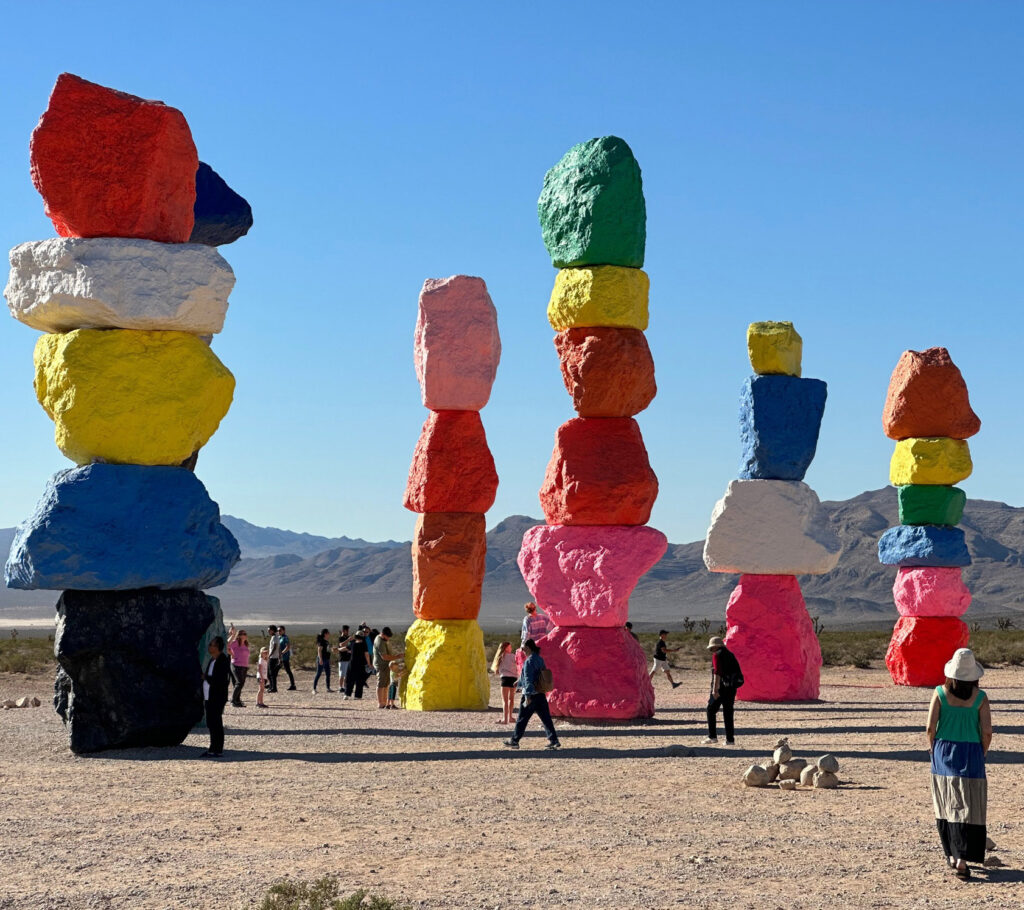
This time, visitors may come and go as they wish since no entrance fees and reservations are required. An ample parking area allows guests to leave their cars behind and walk a short distance to see the seven Stonehenge-like towers up close.
There was a time soon after the towers were unveiled in 2016 when they were cordoned off from the public. These days though, the barriers are history, allowing people to get as close as possible to the attraction and even touch, lean on and clamber atop some of its base rocks to have their photos taken.

Unlike the sprawling and majestic Red Rock Canyon, which was master planned over countless millennia by the Big Boss Himself, the Seven Magic Mountains was produced by the Nevada Museum of Art and Art Production Fund.
Thanks to the glow-in-the dark paint in such delicious hues as canary yellow, bubblegum pink, mint green, white, gray and black, Seven Magic Mountains offers a different allure to nighttime guests.
The entire art installation was first originally envisioned to be on view for two years, but because of the warm reception it continues to receive from visitors, Rondinone and his collaborators and supporters are exploring ways to keep the artwork on view for several more years at its current site.
That could buy them enough time perhaps until an ardent Seven Magic Mountains fan hit the mega jackpot along the Strip and fund the attraction’s upkeep indefinitely.

